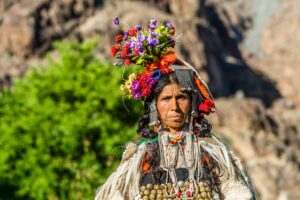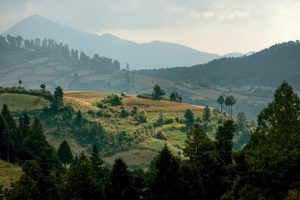Support Hidden Compass
Our articles are crafted by humans (not generative AI). Support Team Human with a contribution!
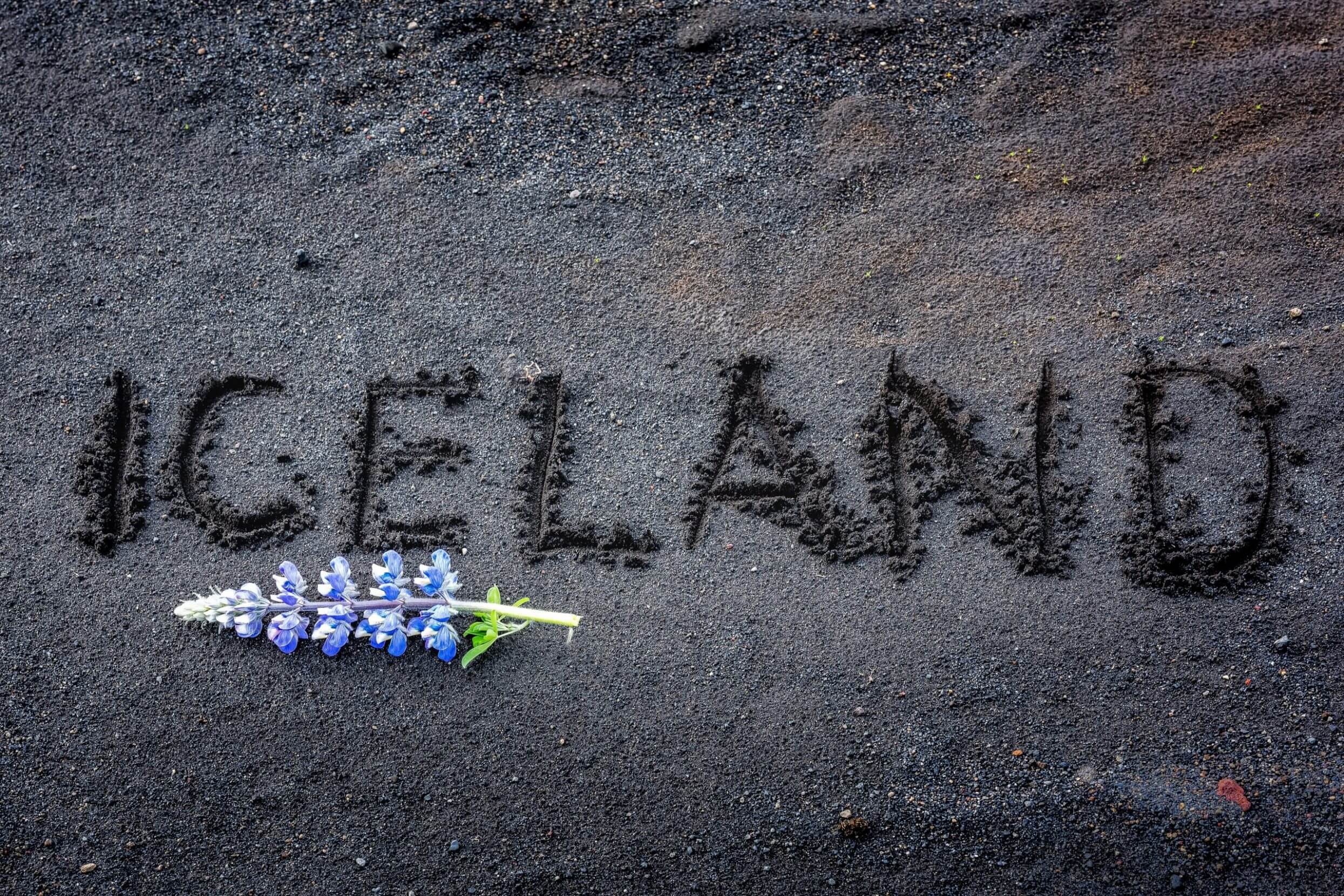
In Iceland, lupine flowers like this one have taken over the landscape. Photo: Ivan Kmit/Alamy
The little aspens and birches that stick up out of the soil in this miniature forest barely reach my hips, or my shoulders. In fact, most of the trees here in Iceland stand no taller than 15 feet. The country’s woods are shrunken, dry, spread out and squat, where previous forests had reached heights of 50 feet.
There are beautiful shrubs, and flowers stretching upward towards the sun. But the trees stand sparse and malnourished and young, too new, trying to take to the soil and hold on. The landscape beyond these forests seems desolate, and in a lot of ways, it is. But there’s life here if you know where to look.
Almost always preluding an Icelandic forest is a field of ravenous purple flowers called lupine. I find standing in an expanse of these bushy, purple plumes enchanting, their violet bulbs turned towards me, watching my every step. They’re such a welcome sight amongst the quiet, volcanic landscape, that if I didn’t know any better I’d think they belong here — hearty flowers that overcame the adversity of the Icelandic soil. But these flowers are far from native; and rather than overcoming adversity, they were brought here to correct it.
Now, lupine are destroying the Icelandic countryside as quickly as they once replenished it.
~~
Before this Nordic island was named for the ice that carpets a tenth of its surface, forests were its dominant feature. According to a study done by Dartmouth, forests once covered between 25 and 40% of Iceland’s landscape.
But when the Vikings arrived in 874 B.C.E., seeking wood for their longships and (no doubt) to stay warm, they reshaped the country. Their need for lumber and field space for their cattle drove them to fell the trees, while the poor soil quality and the harsh climate slowed regrowth. Early Icelanders gave the landscape the push it needed to nosedive into deforestation.
Iceland is also an extremely volcanic landscape, with, according to the Volcano House in downtown Reykjavik, at least one volcano erupting every four to five years. This has a major hand in the desolation. Much of the soil I encounter on the island is pure volcanic ash, and it is extremely susceptible to wind erosion. With the forests that once existed no longer holding this soil in place, wind erodes at an alarmingly rapid pace. In fact, Iceland’s soil is the most susceptible to wind erosion on Earth.
Now, lupine are destroying the Icelandic countryside as quickly as they once replenished it.
There are no longer Icelanders disposing of trees for farmland, and there’s less demand for firewood with electricity running steadily throughout much of the island. But the damage enacted is nearly irreversible. Nearly.
~~
In 1885, Icelanders invited a hoard of tiny purple flowers to their island in an attempt to revive its volcanic landscape. The island’s soil was in trouble — its chemistry gone awry by the forests that were demolished and the increasing winds churning up the land even into the mid-20th century. Lupine were brought in by the Icelandic Forest Service to replenish the soil’s nitrogen — which provides nutrients to any plant that might inhabit the soil later on — and that’s what these flowers did.
But the lupine refuse to be evicted, which makes it almost impossible for any other plant to latch onto the soil that these flowers occupy. What was meant to be a temporary stay has turned into an invasion. Lupine are now creeping into spaces once inhabited by mosses or lichens, both of which are native to the island. The purpling of Iceland has aided its soil quality, but at a cost that no one expected. Lupine originate in North America — where I am from — and I feel a certain kinship with these bottle-brush weeds.
I, too, feel invasive.
~~
My peers, fellow researchers and lovers of nature, climb on the basalt columns like monkeys. Seabirds roosting high on a ridge creep ever higher with every swell of the rising sea, while fingerprints mark their habitat. The gray ocean, violent when the Vikings washed ashore, and violent still, grows more and more hungry as sea levels rise, raging, swallowing tourists who are too unaware not to go near its maw.
~~
Some of the most unreachable places on earth are among the most beautiful. Perhaps they maintain their beauty because of their unreachability; what cannot be reached cannot be destroyed. Unfortunately, unreachability is taken as a challenge by some of the more outgoing humans. Then others follow. Cue invasion.
Tourism grew to occupy one-third of Iceland’s economy in 2015, and the number of tourists coming to the island has been on the rise ever since. In 2018, 2.3 million people visited Iceland — an astounding six times the number of the country’s resident population.
Like the lupine, I travel to Iceland to bring it to life, but by mistake, I end up hurting the place I crawl upon. I try to educate people, hoping that they understand to come, but to be careful. I beg them to watch where they step, even as I step incorrectly.
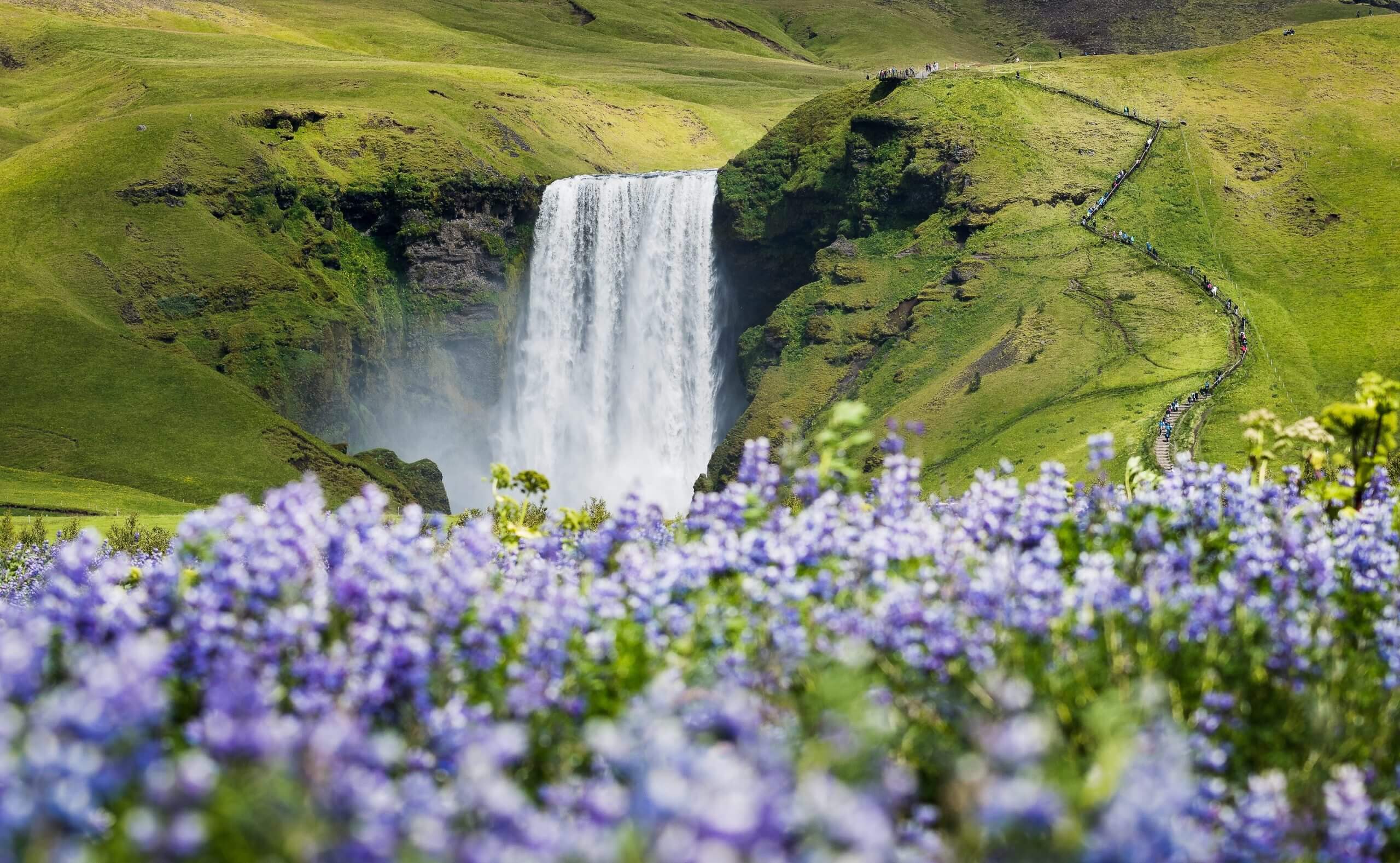
Tourists stream up to a waterfall in the distance, while invasive lupine fill the foreground. Photo: Matthias Serfling.
~~
Initials have been carved into a Swedish whitebeam, the oldest tree on the island, brought from Sweden when Reykjavik was in its infancy. Stickers have been plastered onto trailheads; fingerprints worn into rock.
It takes roughly 80 years for Icelandic moss to regain its health after it has been touched. There is moss that was damaged before I was born, before my parents were born, even, that is still actively repairing itself, pulling every fiber back towards its center, slowly. And there is moss that’s been touched today, as I’m writing this, that might be struggling to regenerate even after I’ve died. The infection left on the moss by a single human touch outlasts a lot of things.
We leave our mark, whether we mean to or not. Even lupine leaves a scar, because we brought it here. To correct our over-correction, we have named lupine a public enemy. But the damage enacted is nearly irreversible.
Nearly. Because unlike the lupine, we don’t just live. We learn.
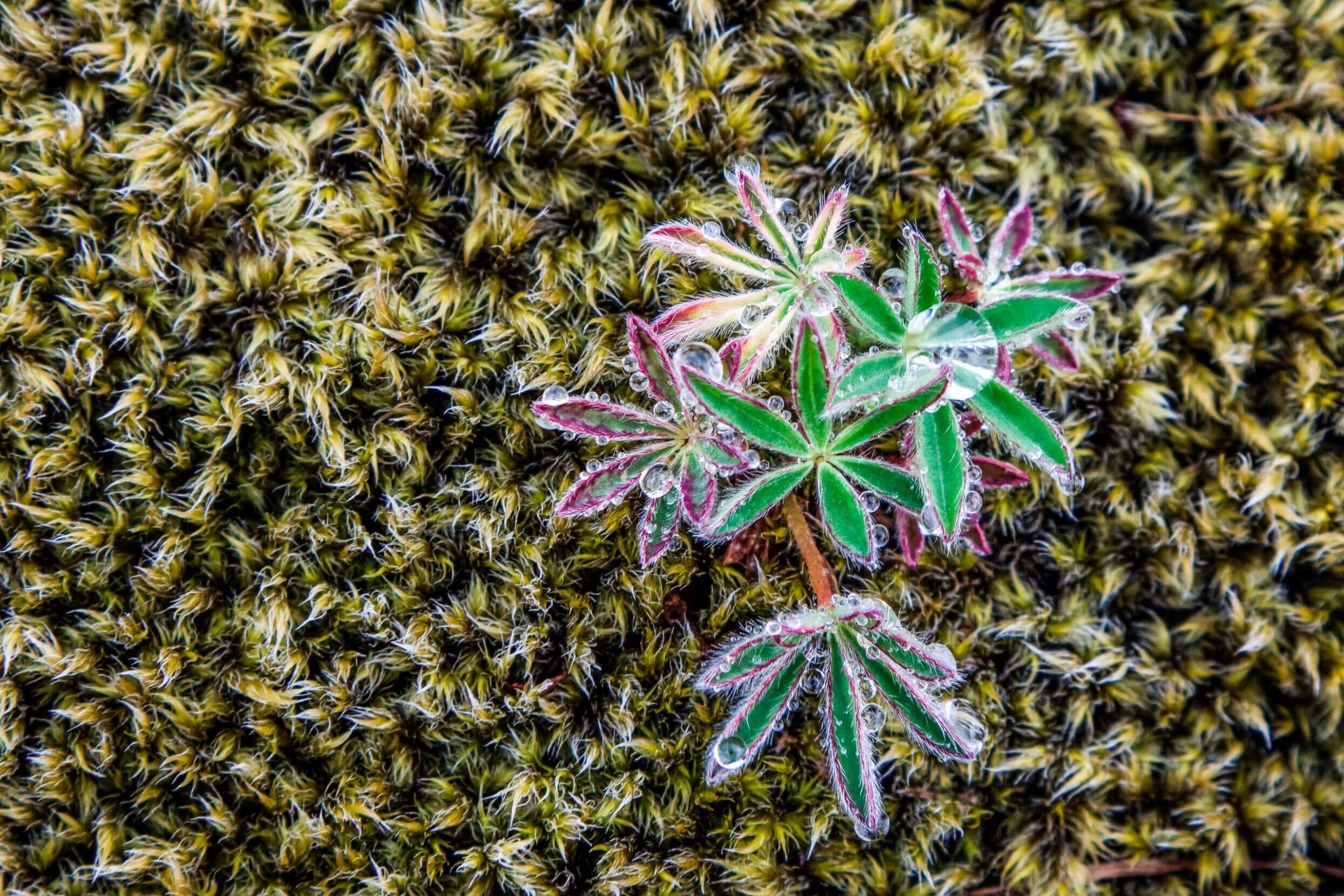
Lupine emerges from the Icelandic moss. The moss takes decades to regenerate. Photo: Harry Laub/Alamy.
~~
Ever since the establishment of the Icelandic Forest Service 50 years ago, Icelanders have held a “Tree of the Year” contest in Reykjavik. The goal is to encourage residents to plant more trees, with a little competition as incentive: the planter of the winning tree is honored with a small awards ceremony, which serves to educate the public about afforestation programs in and around Reykjavik. On walking tours, guides point out the most recent “Trees of the Year,” sharing not only the species of each tree, but the names of the citizens who planted them.
…unlike the lupine, we don’t just live. We learn.
This contest is a glimpse of something bigger — a movement that stretches far beyond the city limits. Since 2015, more than three million trees have been planted. Earlier this year, the Icelandic Forest Service stated their intent to ramp up the effort and plant another four million by 2020.
Along the outskirts of Reykjavik, there are Icelanders planting trees in the miniature forests. Almost every tree I’ve encountered during my time in Iceland has been planted by human hands.
The same hands that destroy, rebuild.
Shannon Donaghy
Shannon Donaghy is a queer poet, writer, and world traveler from Philadelphia, PA.


